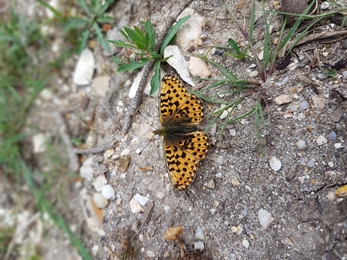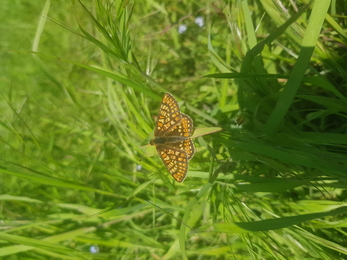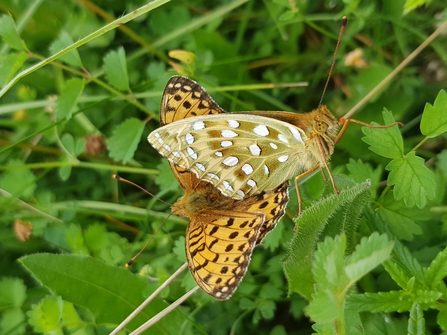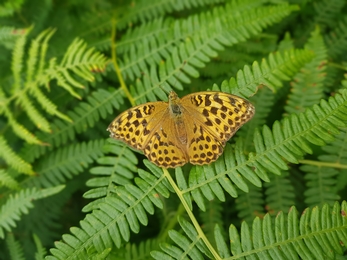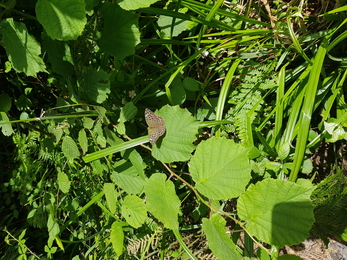Ecologists love a good species list. There are few things more satisfying than a well-worn survey sheet chronicling a hard day’s work. When I joined the Trust’s ecology team as a trainee ecologist, I decided to set myself a challenge. It had to be achievable yet push me a little; not so daunting that I wouldn’t stand a chance at completing it, but not so easy that it was over by the end of the first week of the survey season.
I knocked about a few ideas before deciding on my goal. In the end, I decided to embark on a butterfly quest, as much of my role with the Trust involves surveying for invertebrates. Specifically, I would aim to find all of Hampshire’s fritillary species over the course of the summer. There are six resident fritillary species between Hampshire and the Isle of Wight. The perfect challenge.
The first fritillaries you are likely to run into in Hampshire are the pearl-bordered and small pearl-bordered fritillaries, in that order. Confusingly, the small pearl-bordered is not much smaller than the pearl-bordered but is in fact better distinguished by the underside of its wings. Both can be found in relative abundance around the New Forest.
The marsh fritillary has declined substantially throughout the country and has gone locally extinct in much of Hampshire. This species is part of the Trust’s missing species work where, together with Butterfly Conservation, we have returned the butterfly to north Hampshire. I was nonetheless anticipating this fritillary to be the trickiest to find. However, at Martin Down National Nature Reserve, where Hampshire, Dorset and Wiltshire meet, there they were, flying in large numbers.


